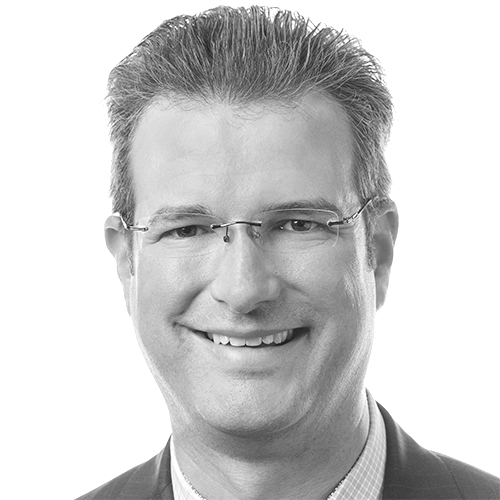With 667 licensed beds, Texas Children’s Hospital is already the largest children’s hospital in the nation, but even that isn’t always large enough.
“The key word is ‘demand,’” notes Lance Lightfoot, VP and general counsel for the Houston-based hospital. Lightfoot is responsible for the legal, compliance, risk management, internal audit, and real-estate functions for the hospital and its affiliated entities. “We are in a market that is growing exponentially. We have a lot of people moving to this area—a lot of young families with children—and we see ourselves as being in the best position to serve that population from a healthcare perspective. To meet the demand, we need to expand.”
That’s why Texas Children’s is in the midst of a $1.5 billion expansion, an initiative that touches on everything from adding to its existing facilities to building new ones and providing more and different services.
“We’re looking at it all. We’re trying to do what we can to best serve our patients by providing the right care at the right place at the right time,” Lightfoot says. “People want ease of access in addition to quality. What the board, the CEO, and our leadership team have done is put us on a trajectory to best meet these needs.”
“We’re looking at it all. We’re trying to do what we can to best serve our patients by providing the right care at the right place at the right time.”
One of the ways the hospital is growing is with the addition of nineteen floors to one of Texas Children’s existing inpatient facilities in the Texas Medical Center, which will house its heart center, intensive-care beds, and operating rooms. “That’s a direct result of us realizing over the last couple of years that there have been instances where we could not accept every patient transfer or critically ill patient who needed our care,” he says. “We want to do everything we can to provide our services to any and all who need us. To do so, we must expand.”
The $1.5 billion budget is being utilized for three distinct projects intended to increase access to Texas Children’s services. The first tackles the creation of a new community hospital in The Woodlands, Texas, thirty miles north of downtown Houston. Approximately $360 million is earmarked for that.
“One of the key drivers of this expansion was ExxonMobil consolidating its workforce in The Woodlands and moving around 10,000 employees to the area,” Lightfoot says. “We already had determined it was a likely location for a community hospital in the future, but ExxonMobil’s move was a key indicator that there would be enhanced need for pediatric health services in the area.”
The hospital’s new outpatient clinics in The Woodlands will open in the fall, and the inpatient facility is scheduled to open in 2017.
The second project surrounds the nineteen-floor expansion in the Texas Medical Center, which will see each of the rooms in the heart center and intensive care rooms essentially triple in size.
“This building will include the latest technology, and the size of the rooms will be much more family-centric. As these rooms are for critically ill children, they will be able to accommodate parents and family members more comfortably, which is extremely important,” Lightfoot says. “Kids can be here for months on end for a transplant or other serious surgery, and this will allow parents to be with them and sleep comfortably in the same room.”
The third project is the retrofit of the current heart center and expansion of the Texas Children’s emergency center, set for completion in 2020.
“With us, and other pediatric hospitals, we often refer to the emergency center as our front door, and most admissions come from there,” he says. “Our emergency center is thirty years old and based on all the growth in population and the number of kids we see, we need to expand and make more user-friendly space for our staff, physicians, patients, and their families.”
These expansion projects have a budget of $575 million, and to support these efforts, the organization plans to hire approximately 4,000 employees over the next five years. “It’s an exciting time at Texas Children’s,” Lightfoot says. “From an attorney’s perspective, you really want to like your client and believe you’re contributing to its success. I couldn’t have a better client than Texas Children’s.”
Lightfoot is responsible for the assurance functions of the organization, the legal department, the compliance department, and internal audit—all of which play integral roles in enterprise risk management (ERM) at Texas Children’s. To manage that, Lightfoot works primarily with the internal audit function.
“I think we were a little ahead of the curve on this. We started implementing ERM in earnest in 2012, and we’ve seen that, especially with a rapidly growing organization, we can bring some value by providing our leadership team with a management tool they can use to better understand where they should be focusing, and maybe how they could be allocating resources more strategically and efficiently,” he says.
“It’s been an evolution,” Lightfoot continues. “We now have agreed on a set of key risks for our organization. We’ve documented how we are managing and mitigating those risks, and we are holding ourselves accountable to monitoring how effective we are being in all those activities.”
Texas Children’s is also in the midst of a $475 million Promise Campaign to help raise funds for the three expansion projects and to address current challenges and anticipate patients’ needs.
“The fact that we’ve already raised more than half of our $475 million goal is a testament to the trust the community has in Texas Children’s delivering on its mission,” Lightfoot says.
“We have an obligation to expand services for our community. We don’t necessarily consider it to be a choice—it is something that is needed—but we’re really excited to do it,” he says. “In a city that’s very giving in general, we’ve been able to show the value proposition we offer, how having an organization like Texas Children’s helps keep the population and community healthier.”
Since first opening in 1954, Texas Children’s mission has always been to create a healthier future for children. Lightfoot notes that growth is a critical part of fulfilling that promise. AHL

